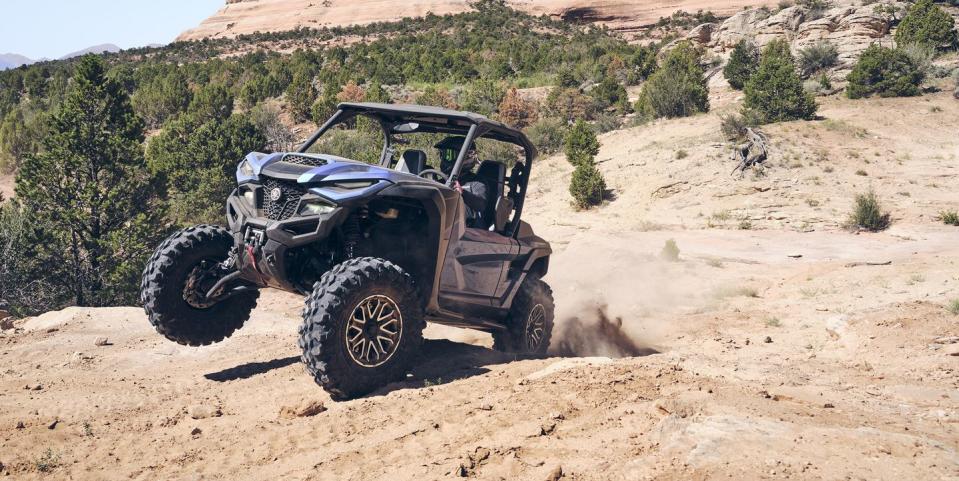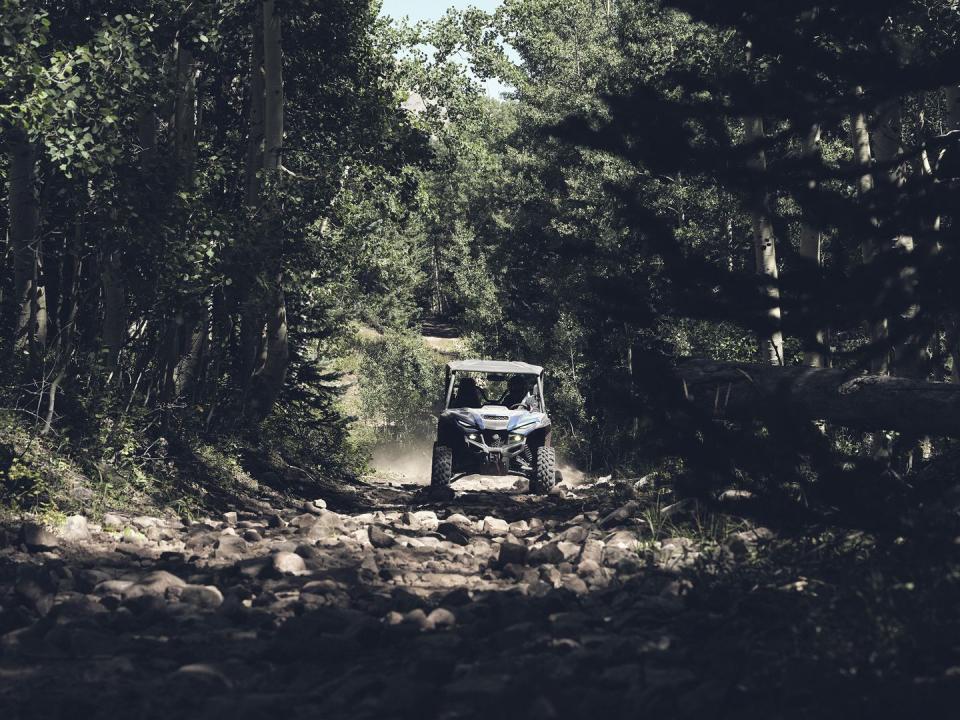Think of the Yamaha Wolverine RMAX 1000 as a Discount Raptor

The Colorado Plateau spans 240,000 square miles and four states—Utah, Arizona, New Mexico and Colorado. Its parks read like the greatest hits of the American West, including the Grand Canyon, Arches, and Zion National Parks. Author and former Secretary of the interior Stewart Udall once said, “I think the Colorado Plateau is the most scenic area in the world—let’s begin with that. Not just the United States.” The dilemma, for a would-be modern explorer, is the vastness of the place. Huge mountains (almost 13,000 feet), huge canyons, huge distances, only a fraction of it accessible by paved roads. If you want to see a big chunk of the Platateu, better break in a sturdy pair of boots and set aside a year or two. Or get a Wolverine.

Yamaha organized a Colorado Plateau trail ride with its Wolverine RMAX 1000 side-by-side to make a couple points. First: A purpose-built off-road machine like a side-by-side can be superior to a street-legal 4x4 when you’re covering long distances far from pavement. And second, you don’t necessarily need a hardcore sport machine like a Polaris RZR or Yamaha’s own YXZ1000R to make haste off-road. The RMAX is designed to be useful, with a utility bed that can accommodate 600 pounds of cargo and the same tow rating as the Ford Bronco Sport (2000 pounds). But the Limited Edition model I'll be testing also has 108 horsepower from a 999-cc fuel-injected twin-cylinder engine, 30-inch Maxxis Carnivore tires and long-travel independent suspension with Fox iQS coil-overs. Our plan for the Plateau was to give those latter features a workout, in the service of scoping a maximum two-day dose of natural beauty.

With dust lingering in the air on an early morning, we blasted off down a high-speed dirt road, leaving the big red rock buttes of Gateway, Colorado behind and heading east to explore the high desert and rugged trails on the outskirts of Moab, Utah. Our convoy included both two-seat Wolverines and the new four-seat model. We comfortably hit Yamaha’s claimed top speed of just under 70 mph. The RMAX uses a drive-by-wire throttle with three settings, and this was terrain made for Sport mode, which offers the quickest throttle response. Yamaha adapted this system from its R1 superbike but realized it needed quicker responses because you can stomp an accelerator pedal faster than your wrist can twist a throttle. The system, dubbed D-Mode, also adjusts the amount of engine braking, depending on the setting.

The fact that the RMAX has any engine braking at all is unusual, given that it uses a belt-driven continuously variable automatic transmission (CVT). But Yamaha’s system uses a one-way sprag clutch and a wet centrifugal clutch and keeps the belt under tension at all times, minimizing the slippage and heat that can destroy belts in a conventional CVT. Yamaha is confident enough in this design that it offers an unheard of 10 year warranty on the belt. That’s nice to know when you’re planning to cover hundreds of miles of trails, none of which run past a dealer stocked with drive belts.


 Yahoo Autos
Yahoo Autos 